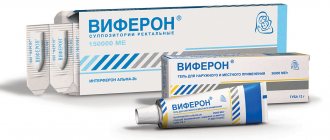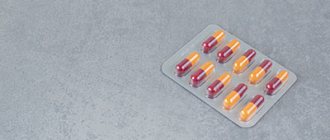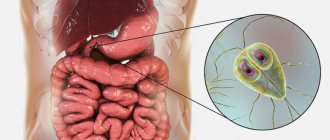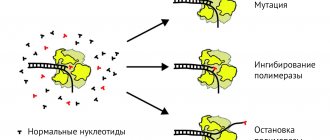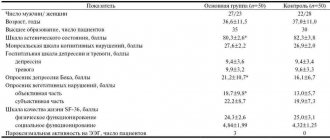Symptoms and clinical picture of ascariasis in children
If the number of worms entering the body is small, the disease may occur in an unexpressed form.
At an early stage, the following manifestations of ascariasis in children may be observed (associated with the penetration of larvae into the lungs and liver):
- deterioration in general health;
- temperature rise to 38 C;
- heavy sweating;
- pain in muscles and joints;
- nausea, vomiting, loss of appetite;
- swelling of the eyelids and face;
- cough is dry or with mucous sputum streaked with blood;
- difficulty wheezing, wheezing;
- chest pain;
- dyspnea;
- suffocation;
- allergic reaction (urticaria);
- skin itching;
- enlargement of lymph nodes, liver and spleen.
Symptoms of ascariasis in children at the second stage - intestinal:
- bloating and flatulence, pale skin or mild jaundice,
- abdominal pain, most often in the umbilical area,
- constipation or loose stools, weight loss.
Further development of the disease leads to a significant weakening of the immune system and the development of serious complications.
Causes
The cause of ascariasis is the introduction of helminth eggs into the gastrointestinal tract. The source of infection is a sick person. It releases ascaris eggs with feces, which fall into the ground and mature there. This requires suitable climatic conditions: temperature, humidity, air circulation. There is a correspondence between the rate of development of larvae in the egg and temperature:
- 15-30 °C – ripening occurs in 9-42 days;
- 24-30 °C – 16-18 days.
At temperatures below 12 °C, eggs do not develop, but they are able to wait out an unfavorable period, while they remain viable throughout the year.
Transmission routes
The transmission mechanism is fecal-oral. It is carried out through household items, water or food products. A child can become infected after eating unwashed vegetables, fruits or poor-quality drinking water. Children play in the sandbox, garden, and playgrounds. There they contaminate their hands, which also become a transmission factor.
Ascariasis is more common among residents of rural areas. People suffer from it throughout the year, but a significant number of cases are observed in the fall, when berries and vegetables ripen. In winter, they are stored in pantries and cellars, where favorable conditions for the maturation of eggs are also created.
Characteristics of the pathogen
Ascaris parasitizes not only humans, but also pigs. This worm is yellowish-red in color, but after death it turns white. It is similar in shape to a spindle, the body length is different in females and males. The former are much larger (25-40 cm in length) and can lay up to 250 thousand eggs. The lifespan of one individual is 1 year. Parasites are classified as geohelminths due to the need to mature in the soil.
Migration of roundworms
The appearance of roundworm eggs in the intestines is the first stage of the disease. The larvae are released from their shells and enter the blood vessels, through which they are transported to the liver and lungs. Other localizations are also possible: eyes, brain, kidneys, but they occur less frequently. In the lungs, through small bronchioles and alveoli, the larvae enter the respiratory tract, rising to the pharynx. There they are reintroduced into the digestive tract. Migration lasts about two weeks. Then the larvae fully develop in the intestine, and reach sexual maturity in 70-75 days.
Roundworms are very mobile and aggressive. They can rise and fall along the intestines. Adults injure the intestinal wall, forming fistulas and causing purulent complications. Large accumulations of roundworms lead to intestinal obstruction, and toxins and their metabolic products lead to allergic reactions.
Diagnostic methods
Diagnosis of ascariasis in children is based on clinical and epidemiological data. In the intestinal stage, the diagnosis is made by the presence of eggs or roundworms in the feces.
Basic tests for ascariasis in children:
- complete blood count (shows the presence of leukocytosis and eosinophilia);
- microscopic sputum smear (detects the presence of larvae);
- stool analysis for worm eggs.
X-rays of the intestines and chest, endoscopic studies can reveal adult roundworms.
Prevention of ascariasis
Infection with roundworms most often occurs in children's groups in the spring and summer during walks and games in nature. The danger of the consequences of this disease cannot be underestimated. Therefore, parents need to teach their children the rules of personal hygiene as early as possible. It is also necessary to monitor the quality of baby food and strengthen general immunity. As a preventive measure, it is necessary to regularly carry out preventive deworming.
Dear parents!
Remember that only a qualified pediatrician can make an accurate diagnosis, determine the causes and nature of the disease, and prescribe effective treatment. You can make an appointment with our specialists or call a doctor at home by calling 8-800-700-31-69 Grow up healthy and happy!
Basic treatment methods and contraindications
Ascariasis can only be treated with medication.
In the acute phase, desensitizing and anthelmintic drugs are used - Thiabendazole or Mebendazole. Bronchodilators and corticosteroids are also prescribed to relieve pulmonary manifestations.
In the intestinal stage, Levamisole or Pyrantel is used once, as well as multivitamins, iron supplements, and enzyme preparations.
Usually the disease is completely cured. A month later, a control stool test is prescribed (done three times).
Treatment with folk remedies
With the availability of effective medications, the need for folk remedies has disappeared. But some parents continue to insist on using:
- mashed pumpkin seeds, washed down with boiled water;
- onion infusion (pour hot water over the chopped onion and leave for 12 hours);
- collecting herbs from chamomile, wormwood, tansy flowers, brewed with boiling water, the decoction has a rather unpleasant and bitter taste, it will be difficult to force a child to drink it;
- A decoction of walnut leaves has a much more tolerable taste.
Walnut leaves can be used for therapy
According to the recommendations of folk sources, every evening the child needs to be given cleansing enemas to remove dead and weakened worms. Even traditional healers consider tincture of celandine and garlic to be contraindicated for children.
How to take a stool test for ascariasis?
No special preparation is required. But some recommendations will have to be taken into account:
- Before collecting stool for ascariasis, both children and adults need to go to the toilet and urinate.
- Then you need to take a clean, dry container (pharmacies sell special plastic containers designed for collecting feces, as they look like in the photo). If you don't have any on hand, any empty bottle with a lid will do.
- To determine ascariasis, it is necessary to place a volume of material equal to two teaspoons in a container.
- It is necessary to take samples from different sides of the feces (side, bottom, inside).
- After immersion in the container, the material is tightly closed with a lid.
- It is important to stick a piece of paper on the container with the inscription of the last name, first name and date of collection of the analysis.
In order to make an accurate analysis of stool, the material cannot be stored in a container for a long time (ideally, the time difference between collection and laboratory examination should be no more than 45 minutes). If necessary, you can delay the time for five to six hours, but for this it is best to put the feces in the refrigerator.
Traditional medicine methods demonstrate good effectiveness in treating ascariasis. Particularly popular is the juice obtained from pumpkin seeds. It is recommended to drink it daily on an empty stomach. You can also take garlic diluted with milk.
What is the difference between pinworms and roundworms: the first symptoms of infection
Infection does not depend on a person’s standard of living or his age; every day a huge number of people infected with helminths are detected. The varieties of parasites are numerous and they all have characteristic differences, but these individuals also have common features.
These two types of parasites have the same way of entering the human body - this is a complete lack of hygiene. Everyone is required to wash their hands thoroughly before eating. Do not forget to carry out this procedure after visiting the toilet and walking outside, and upon returning home.
Roundworms and pinworms are very different types of worms, so the symptoms of infection with them differ from each other.
Main signs of infection:
- pallor of the body and mucous membranes;
- decreased appetite;
- weight loss;
- abdominal pain;
- weakened immunity;
- irritability, depression and profuse skin rashes.
With pinworms, everything is much more complicated; they are very difficult to identify at the first stage of infection. Often the disease proceeds completely unnoticed and without even the slightest symptoms. But the main symptom is severe itching of the anus, and the patient feels this unpleasant sensation for several days.
Then the symptoms disappear quietly and appear after some time. Helminths quickly take root in the body and this gives them the opportunity to actively develop and reproduce. An advanced disease occurs with pronounced headaches, constant insomnia and irritability.
Important: a very terrible disease for women, pinworms can penetrate the genitals, causing unpredictable complications and consequences.
What do roundworms (a type of worm), which are most often found in children, look like?
What do roundworms (a type of worm), which are most often found in children, look like?
A disgusting and quite dangerous helminth for human health called roundworm. You can’t call it small, because roundworms can reach up to forty centimeters in length! Moreover, females exceed the length of males by one and a half and even two times.
They are roundworms in shape, with both ends pointed. And the color of this helminth can be very different - from white to pink.
Another difference between a male and a female is the tail end. In males it is slightly rounded, although sharp.
Roundworms are very fond of the human small intestine. Although they also take root well in other organs. For example, there is a known case when a child died suddenly, and at the autopsy they found a whole ball of roundworms in his trachea, which caused the patient’s death by cutting off the supply of oxygen to the body.
Roundworms also cause severe allergies, move freely in the body, and can cause diseases of various organs, for example, intestinal obstruction or bronchitis, otitis media, sinusitis, intestinal perforation, and so on.
These vile creatures live in the gallbladder, large intestine, and appendix. Females are very fertile - they lay almost a quarter of a million eggs in just one day. The life cycle of this parasite is complex. It must pass from the human body into the external environment, where it turns into a larva. Protected by a dense shell, roundworm eggs live for a very long time in the external environment - in water, soil, on berries, vegetables and fruits.
Diagnostic measures
To begin therapy for parasitic infestation, symptoms alone are not enough. It is necessary to establish the presence of nematodes in the body. Several laboratory and instrumental methods can be used to diagnose ascariasis.
Laboratory tests include:
- General clinical blood test. When worms dislocate, leukocytosis (increased level of white blood cells) is observed.
- ELISA or enzyme immunoassay. Microscopy of blood serum to determine the presence of antibodies (immunoglobulins) to roundworms.
- Coprogram (stool analysis for the presence of worms and identification of inflammatory processes);
- Urinalysis (general);
During the initial period of the disease, if there is a productive cough, a sputum test may be prescribed.
Hardware diagnostic methods:
- Radiography. An abdominal x-ray does not visualize the roundworms themselves, but indicates their signs (changes in the small intestine, accumulation of excrement). A chest x-ray is performed in the pulmonary stage of ascariasis. A sign of invasion is infiltration (darkening), constantly changing location.
- Ultrasound or ultrasound of the abdominal cavity. The procedure is carried out as an additional study to determine concomitant inflammatory processes and complications.
In some cases, duodenoscopy is prescribed - examination of the duodenum through an endoscope.

